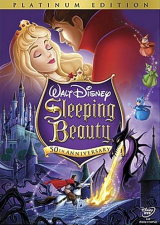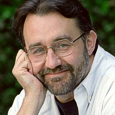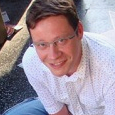In Chapter One of our celebrating the return of Sleeping Beauty to Disney DVD and, for the first time, the high-definition Blu-ray Disc format, Animated News & Views’ Jeremie Noyer speaks exclusively to a very special lady indeed: Princess Aurora herself, vocalist Mary Costa!
Three years…
It took Walt Disney no less than three years to find his Princess Aurora. There’s no need to talk about his demand for perfection in everything he touched but, quite simply, Mary Costa was that perfection, both an as artist and a human being.
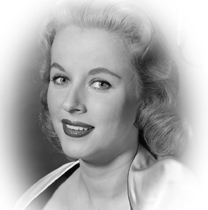 It was in 1952 that she became Sleeping Beauty, and while working on the movie, she also took part in several movies directed by her husband, the late Frank Tashlin, Marry Me Again and The Great Gildersleeve. She also took part in a great number of television programs along with Johnny Mathis and many other artists from 1955 to 1960.
It was in 1952 that she became Sleeping Beauty, and while working on the movie, she also took part in several movies directed by her husband, the late Frank Tashlin, Marry Me Again and The Great Gildersleeve. She also took part in a great number of television programs along with Johnny Mathis and many other artists from 1955 to 1960.
In 1958, one of her dearest dreams became a reality as she stepped into the realm of opera, following the advice that Walt Disney himself and Jack Benny gave her, after the huge success of her performance of Madame Butterfly in the famous Jack Benny Program television show. One operetta at the Shrine Auditorium and one replacement of the legendary soprano Elizabeth Schwarzkopf at the Hollywood Bowl later, her new career was launched. She was now singing all over the world in the greatest opera houses, from the Met to Covent Garden to the Bolchoï, under the baton of the greatest conductors like Igor Stravinski. Additionally, she created the role of Anne Trulove in Stravinski’s famous opera The Rake’s Progress in San Francisco and rehearsed with the composer himself in his house of Los Angeles during summer 1962.
She also sang several times in Candide, an opera by Leonard Bernstein who, just like her, embodied that combination of cinema and classical music. Her repertoire counts up to 44 operas she sang until 1984, when she came back home to take care of her mother, Hazel, who passed away in 1993. In 2001 she was recognized by the Metropolitan Opera Guild for distinguished Verdi performances of the 20th Century. In 2003 she was appointed to the U.S. National Council on the Arts, where she served until 2007. In December 2007, she was awarded an honorary Doctor of Fine Arts degree by Carson-Newman College in Jefferson City, Tennessee.
But above and beyond that immensely impressive career, the most striking aspect of our meeting with Mary Costa was her communicative energy, joie de vive and love for life. Is it because of that that Walt Disney chose her to be his ultimate princess or is it because of her meeting with Walt that she shared his optimism and philosophy on life?
Undoubtedly both.
What’s certain is that I’d never watched Sleeping Beauty the same way, and that I won’t be totally the same person after having the honor of meeting that extraordinary woman.

Animated Views: Dear Princess Mary, how did your own “once upon a time” begin?
Mary Costa: I was born in Knoxville, Tennessee, where I’m living now. I’m an only child and my mother was one of twelve children. From the time I was a little child – I mean three or four years old – I had a very clear singing voice and used to sit down in my sand box and build sand castles and sing and my mother would watch me from the kitchen window. So, I think they were always aware that I had a very clear voice, and I just expressed myself, my joy of living with my singing. But, if someone would come over to this, I would stop because it was very personal. So, my father would get so irritated because I would not sing for all of his friends and everything, but it was a humorous situation because I would sometimes and sometimes I wouldn’t!
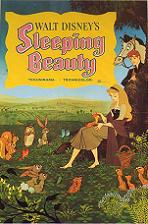 Anyway, I went through my formative years in Knoxville. At 14 years of age, I went with my mother and father to Los Angeles because my father had relatives there and my aunt gave a dinner party for us, and after dinner we would be singing around the piano, all of us together. And a very important lady in music in Los Angeles heard me sing and thought it would be a great idea for us to move to Glendale, California and I would go to Glendale High School. She had a way of getting me into the Los Angeles Conservatory of Music while I was still in High School, so my sixth period of the day would be at Los Angeles Conservatory of Music. Well, I didn’t think my parents would do this, but they did. We immediately came back to Knoxville and within two months, we were back in Los Angeles and resided in Glendale.
Anyway, I went through my formative years in Knoxville. At 14 years of age, I went with my mother and father to Los Angeles because my father had relatives there and my aunt gave a dinner party for us, and after dinner we would be singing around the piano, all of us together. And a very important lady in music in Los Angeles heard me sing and thought it would be a great idea for us to move to Glendale, California and I would go to Glendale High School. She had a way of getting me into the Los Angeles Conservatory of Music while I was still in High School, so my sixth period of the day would be at Los Angeles Conservatory of Music. Well, I didn’t think my parents would do this, but they did. We immediately came back to Knoxville and within two months, we were back in Los Angeles and resided in Glendale.
There is a very funny thing that happened in Glendale High School about my first performance on stage. That was a catastrophe in one way and in another way it was a triumph because I had such a southern accent. When they auditioned me to sing, there is no accent in the singing voice, so they immediately gave me the lead in the opera The Prince of Pilsen. And then they asked me to read, and it was so different from everybody else that they worked with me for a month. The operetta opened. My mother and father were sitting in the audience and my father said to my mother: “when does Mary come on?” and she said: “would you please hush. She’s be on for ten minutes!” He didn’t recognize me at all. They just had really done a remake of me!
He thought I was good, but he was disappointed because he didn’t think I was representing myself and he told me: “you know, I think you have talent. And of course, I’m your Daddy. I want you to be just the best that you can be. But I don’t want you to ever do anything before you’re comfortable with it and then, when you are comfortable with it, I want you to make it your own, so that you have your own style of doing everything. God gives everybody something unique. You have been given a gift and I want you to present it with you own thought pattern and all of your own personality.” Naturally, I was disappointed despite the fact that I got an A+, but it was great, great advice, because I got the same advice later on from Walt Disney. I have to give you this because I have to tell how it built up to my audition.

AV: It certainly sounds like your family was of greatest support at the beginning of your career.
MC: Yes. The very next year, right at Christmas, my father died, when I was 16. My mother and I came back to Knoxville for his burial and I didn’t think she would go back to California by herself with me, but she did, immediately. I was joined by three cousins and an aunt and we lived in Glendale in a little house. They all had different professions and they wanted me to study voice and continue with the Los Angeles Conservatory, and they wanted me to try and get a break to be able to sing. I got a little agent, who was not very important, but he really believed in me. He got a number of jobs for me on radio with Edgar Bergen and Charlie McCarthy, and with Dean Martin and Jerry Lewis at UCLA to sing. I did a lot of soap commercials and they gave me a year supply of “Lux”! All sort of things.
AV: How did you get that audition at the Disney Studios for the role of Princess Aurora?
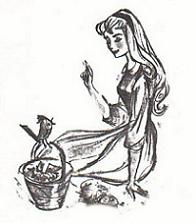 MC: When I finished the Los Angeles Conservatory and then I was kind of singing all around Glendale and all around Los Angeles, I had won some auditions, but the agent said: “you know, I want you to meet a director named Frank Tashlin.” He’s the one who did a lot of the Jerry Lewis pictures. “He is at Paramount Studios and he has just done Son of Pale Face with Bob Hope and Jane Russel and he’s going to do another musical. So, I would like you to meet him.” I went over and met Frank Tashlin. He was this big bear of a man, who was so kind and sweet and interested in me and what I was doing. He said: “I will find something for you in a picture in the future because I think that you would be very, very good. I think you’re very sincere.”
MC: When I finished the Los Angeles Conservatory and then I was kind of singing all around Glendale and all around Los Angeles, I had won some auditions, but the agent said: “you know, I want you to meet a director named Frank Tashlin.” He’s the one who did a lot of the Jerry Lewis pictures. “He is at Paramount Studios and he has just done Son of Pale Face with Bob Hope and Jane Russel and he’s going to do another musical. So, I would like you to meet him.” I went over and met Frank Tashlin. He was this big bear of a man, who was so kind and sweet and interested in me and what I was doing. He said: “I will find something for you in a picture in the future because I think that you would be very, very good. I think you’re very sincere.”
Anyway, when I left his office, I told the agent: “I don’t care if he finds anything for me or not. I’m so glad to meet him because he’s made me feel secure and delighted over the fact that somebody is interested in what I may do in the future.” So, in about two week, he called the agent and said: “you know, I would like to take Mary to a dinner party where she would meet some very influential musical people.” And the agent said: “Well, you’ll have to come out and meet her mother, because they’re new here, and she has to know everybody she goes out with.” So, Frank Tashlin went out and met my mother. She just loved him and allowed me to go to the evening. We had dinner and, again afterwards, everyone was singing around the piano. The man on my right kept leaning over to listen to me. He finally said: “I know you’re a professional singer.” I told him what I had done, that I sang in my church and I had done these things with Edgar Bergen, Charlie McCarthy and so forth. He said: “I wonder if you would go with me tomorrow morning at 10 o’clock to the Walt Disney Studios because Walt Disney has been searching for a voice for the Princess Aurora for three years and he’s getting ready to shelve the project.” And I said: “Would I!?“, because I wanted to meet Walt.
I didn’t think I would get the part. I think this man really worked. It was like 10 o’clock in the evening and he called people very late, because when I arrived there, at 10 o’clock the following day, the entire control booth, sound booth, was filled with about 25 or 30 people. Marc Davis, Ollie Johnston and Frank Thomas, and Winston Hibler and all the people connected with the film. To tell you who that man was on my right and how this was evidently part of my journey to meet him, this was Walter Schumann, who had the great choral group, the Voices of Walter Schumann, and he was to do the music for Sleeping Beauty but he died. But he was the one that got me to Walt.
AV: How did your audition go?
MC: That audition was just one of the joys of my life because there was just one little upright piano in this big, big soundstage and this wonderful man, George Bruns, who ended up doing the music. He taught me little birds calls in the woods and the songs. I was just loving every minute of it. And then, three people came walking out of the sound booth and I knew something was not on track. It was Marc Davis and Winston Hibler, and one other gentleman – I’m not sure who that was. Marc Davis told me: “now, don’t panic! We were just a little bit concerned about your accent.” And I said: “what accent?” because it was extremely southern! They said: “What we thought was that if Vivien Leigh, a beautiful English lady, could do a southern belle, then surely a southern girl can do an English princess!” And I said: “how do you mean?”
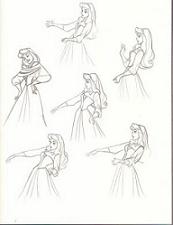 So, Marc Davis, who was dramatic and very humorous said in a very English voice: “do you think you could talk like this?” and I said: “Of course, I can talk like that” (with a British accent). And he said: “how do you do that?”; I said: “because my dad and I used to do that when I was a little child, when you would imitate everybody”. He said: “Could you sustain it?” “Oh yes, I could”. “Could you read lines like that?” “Yes, if you tell me what I’m supposed to say, I’d do that.” So, they put the dialog before me, and worked with me for about a half an hour and then, we put it on the recording.
So, Marc Davis, who was dramatic and very humorous said in a very English voice: “do you think you could talk like this?” and I said: “Of course, I can talk like that” (with a British accent). And he said: “how do you do that?”; I said: “because my dad and I used to do that when I was a little child, when you would imitate everybody”. He said: “Could you sustain it?” “Oh yes, I could”. “Could you read lines like that?” “Yes, if you tell me what I’m supposed to say, I’d do that.” So, they put the dialog before me, and worked with me for about a half an hour and then, we put it on the recording.
Because Walt Disney wanted the same person to do everything, the singing and the dialog. Then, I said: “May I meet Mr. Disney, now?” and they said: “Mr. Disney has already heard you and I’m sure that you’ll be hearing from him.” That’s all they said. So, I said: “Won’t I get to see him?” “Walt doesn’t like to be influenced by the personality in person of the person he is considering. So, you’ll meet him at the proper time.” So, I was disappointed but I was thrilled that he had been there. And I’m told that he heard me from behind the screen.
At 5 o’clock, that afternoon, I was back in Glendale, not thinking I would hear anything at all. And it just happened that all of us were in the house: my mother, my aunt, my three cousins and I, and the phone rang and my mother got the phone and we all kind of rushed to this little middle hall that connected all the rooms. She was whispering to us: “It’s Walt Disney!”. You know, he called her personally because he knew from Walt Schumann that I had lost my father and that we were living in Glendale, and that they were all pulling for me to succeed. He talked to her so sweetly, because I remember her saying: “thank you Mr. Disney. I’ve very proud of her”, that kind of thing, like a mother would do. And then, he said: “May I speak to Mary?” This was my first talk to him, which was the first of many to follow because he said: “Mary. Now, you call me Walt!” and I said: “yes, Mr. Disney, I will!”. He said: “No, no, no! Call me Walt!” and I said: “yes, sir!” He said: “I’m so proud that I have found exactly what I want and I know that you will do a good job. I want you to be very disciplined for me because I want that voice to be just as clear, always, as it was in this audition.” I said: “yes, I will”. He said: “I’m not going to be meeting you in person for quite a while, but we will talk on the phone, and then, you know, when I feel it’s the right time, I’ll come over to the soundstage and we will meet. But we’re going to be talking because I have many things I want to tell during these recording sessions.”
And this was the start of talking to him twice or three times a week, or whenever we would record, sometimes, they would skip a number of weeks and then, we would start again. But he would always talk to me on the phone after a session and he would give me advice. Then, right in the middle of Sleeping Beauty, he stopped to be able to open Disneyland. I was 22 when I started, and the voice parts were done over a period of three years.
The strange is that, when I was a little girl, one of my first pictures my mother to took me to see was Snow White, and I was so fascinated by her. I never knew I would grow up to be a Disney Princess! I talked to Walt’s brother, Roy Disney Sr. in the 60s and he said: “you know, Walt knew that he wanted you to do the part of Princess Aurora in about four notes when you started singing!”
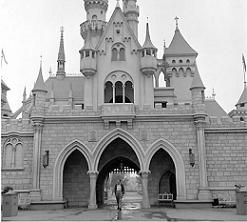 AV: What do you keep from Walt Disney?
AV: What do you keep from Walt Disney?
MC: He said the most amazing thing that I have always kept with me throughout my career, and this is what really almost makes me get tears in my eyes every time I tell it, and I’ve told it a number of times, but he said: “God gives everyone something unique – that was exactly what my father told me. He’s given you a very unusual quality of voice and I don’t want anyone to read a line for you or to sing anything for you. I want to pull from your own thoughts. Because I feel that there are many colors up there, like a kaleidoscope, and I want you to go in and to talk to the animator Marc Davis – whom I became a great friend with, who was so humorous and so encouraging and inspirational – and ask him about anything you want to know about the scene, what he expects from it, what colors he need. Ask him everything.”
So, I would go to Marc Davis and look at the storyboards, and ask him about the character and how he felt about the Godmothers, and did she know about being taken away from her mother and father and all this. And Walt said: “I want you to ask all those questions and I want you to get all of these colors in your mind and I want you to drop them to your vocal talent and paint with your voice.” He also said: “I want you to have something hot to eat an hour or two before you come to the recording sessions. I want you to be oiled up!” I thought later on, many time, how did he know? Because that’s exactly what I did as an opera singer. You always eat two or three hours before so that you’d have the energy and that kind of really fresh, wonderful kind of oiled-up feeling with your vocal cords. And I wondered how he knew that, but of course, he started out doing the voice of Mickey Mouse! And he had this kind of high voice. It ‘s amazing because he really kept his voice like that for many years, until smoking stopped that.
This was the start of a work ethic for me that followed me all through my life, and it was the start of a personal relationship with Walt that was almost a father image for me, because I was so fascinated by his electrical, really electric personality, the fact that he was so creative and the fact that, when he was talking to you, it was almost as if he were plugging to an electrical current. And there were so many wonderful suggestions, and so many things he told me.
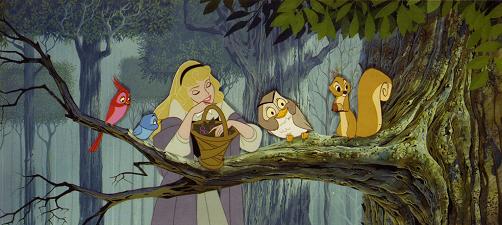
AV: How do you see the character of Aurora?
MC: I would describe her almost as it was with me at the time I recorded her voice. There is that funny thing that happened with my mother. She lived to be 101! When she was 97, I took her see Sleeping Beauty. That was in the late 80s in Palm Beach. We were in a little movie complex and the place absolutely filled. Right in the middle of the scene in the wood, she just absolutely exclaimed loudly: “Oh, Mary. That looks just like you!” And I had to put my hand over her mouth! I have never forgot it. Because would come in to all of the recording sessions and he would sit there and watch my movements. Because I never could say a line without moving my hands around. My father was the same way – I guess it’s the Italian part. I can’t tell how much the hands the movements look like my own, like I was when I was doing that.
 So, I grew up with older parents and I had an intuition maybe that was beyond my years, even at 16, I did, because my father was Italian and very musical and very imaginative. He told me so many things as a child. As Walt Disney said, my mind was going around like a kaleidoscope all the time because my father and I looked into a kaleidoscope when I was a child. So, I feel that Aurora was taken by the Godmothers, raised by them. They were kind and mischievous and loving and very protective of her. Then, she was in the woods with the animals, and they’re so different in personality and she loved them all and played with them not knowing that she was responding to them as she would almost to people. So, they were responding to here and were so funny to her.
So, I grew up with older parents and I had an intuition maybe that was beyond my years, even at 16, I did, because my father was Italian and very musical and very imaginative. He told me so many things as a child. As Walt Disney said, my mind was going around like a kaleidoscope all the time because my father and I looked into a kaleidoscope when I was a child. So, I feel that Aurora was taken by the Godmothers, raised by them. They were kind and mischievous and loving and very protective of her. Then, she was in the woods with the animals, and they’re so different in personality and she loved them all and played with them not knowing that she was responding to them as she would almost to people. So, they were responding to here and were so funny to her.
I think Aurora was a person who was not lonely but who was innately romantic. There was a certain part of her that maybe she didn’t realize that was just so romantic and maybe expecting something that she didn’t even know what. But something else. I hardly know how to explain. I think that, for her age, she was innocent but she had all the other qualities, maybe more in abundance than someone who had stayed with her parents, because she lived with older people, older ladies. So, I think she has a lot of characteristics that were a little bit older, and yet, she was in this young body and had this young outreaching spirit. She had certainly never seen a picture of a man or anything before when she saw that prince. It was definitely love at first sight. That was just a natural reaction.
For me, she was not just such a simple character as people would think looking at her walking through the woods. She was a loving character. She loved her life because I don’t think she knew anything else. And why would she not? Because there were always so many funny things going on, because she would laugh with her Godmothers. But she was around the things that really are important in life. I wish that children today could have more of the things that are really important. They’re so locked in the world of the internet that I don’t know if that appreciate nature as much anymore, or animals, or the parents, or the loved ones that are bringing them up and the respect and everything which she had for them. So, when you start to think, I don’t think she’s that simple, because she’s much more of a character than much people. And my thinking about that comes from Marc Davis.
AV: You mentioned Marc Davis, who was the animator of Aurora. What kind of relationship did you have with this immense artist?
MC: Marc Davis, and Alice Davis, his wife, who was a great, great costume designer and artist and worked right alongside him all through his life, became very, very close personal friends. As a matter of fact, I spoke at Marc’s memorial. Marc Davis was a man who absolutely loved people and animals. I could look at an animal and gleefully draw the expressions of the animal and really bring the heart out of anyone. You could just see the love that he had and how he could draw that personality out of the animals or the persons. Someday, at the Academy of Motion Pictures Arts and Sciences, they showed a picture of some of the early drawings of Thumper that were done by another artist – they didn’t say who it was. And then they said that Walt was such a perfectionist. He wanted to try Marc, because he knew Marc really liked animation and he wanted to see what he could do with this. Then, they put an entire page of this huge screen of Thumpers that Marc had drawn and the entire audience went “Oooh!” because they were so dear, and so funny and loving. Marc was a person who brought the best out of you because he was extremely disciplined himself and he did something that he absolutely love to do, that was to draw and put life in animation.
Walt said to me: “I want you to go in and ask Marc anything you want to know”. So, one day, I’d asked so much through the week, I went in and out just to make him laugh. So, I went in to him and I said: “Marc, what do you think the air was like in the forest?” And immediately, he said: “Caressing”. It just absolutely stopped me because it changed my entire view of the scene and made it more golden, and more like the colors are after a rain. And I said: “Marc, I came in to make you laugh!” He said: “Oh, you could always make me laugh! That was a very important question!” He was just someone that was so receptive and so inspiring in the way he responded. He was a great friend and he just saw humor in everything. He was extremely sensitive and intuitive. There wasn’t anything that escaped his eye. And that eye went straight to his heart. It really did, and he drew from his heart. That’s what I feel is important in artists of every kind today, whether in singing, or painting, or dancing, or on the stage or drama: it is the heart that to capture the audience.
In 1999, I was doing a signing at Disney World with Marc Davis. We were sitting side by side and a lady came up and said to me: “Miss Costa, how does it feel to be the voice over for a famous Disney princess.” And Marc – he was so funny! – said: “Pardon me, Madam. The artists were the ocean of sound upon which we animated.” I looked at him and kind of laughed. And he looked back at me and said: “That’s absolutely true. We had to have all of the inspiration from you before we animated on top of that sound. All the voice parts were done first.” I don’t think people realize that, today.
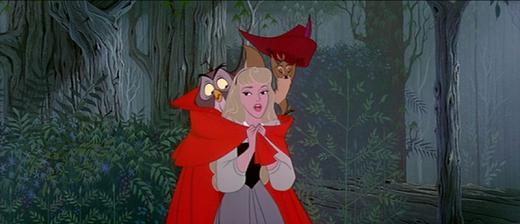
AV: Sleeping Beauty was composer George Bruns’ first major contribution to Disney music. What kind of a person was he?
MC: George Bruns was a big bear of a man, just like Frank Tashlin, and they were very close friends. I didn’t tell you that a year later I married Frank Tashlin! And, because I was working at Disney, I would have some conferences with George Bruns. He and Frank Tashlin became very good friends. George Bruns had a great, great feeling for orchestration and arrangements and he did, I think, some beautiful, beautiful arrangements for Sleeping Beauty. Because Walt was so fascinated with the Tchaikovsky Sleeping Beauty ballet. When he would talk to me about it, he would say how the little animals sounds and all of the animals movements could be done to the little short phrases that were so meticulously perfect and how the sweeping, romantic melodies would so fit the story of Sleeping Beauty. And George Bruns knew that, too. He was very sensitive and innately musical. So, he was able to really, really work with Walt beautiful. I don’t think they’ve ever had any run ins in any way, because I think they were so in tune, very in tune. George Bruns also had a great sense of humor. The wonderful part of that and the reason, I think, it was so joyful to work on Sleeping Beauty, was because everybody was in such a great mood all the time. They came in there because they were excited about the project, because Walt was very excited and he was so excited to get it moving along.
 AV: To me, with that treatment of the music by Tchaikovsky, Sleeping Beauty is a kind of a continuation to Fantasia.
AV: To me, with that treatment of the music by Tchaikovsky, Sleeping Beauty is a kind of a continuation to Fantasia.
MC: I agree. I agree. I have never heard it expressed that way but I think that’s perfect. I’ve never thought of that but you’re absolutely right.
AV: What recollections do yo have of the recording of the songs?
MC: They recorded them with piano on two different tracks and then they orchestrated them. I was taken into the orchestra also and they put that on two different tracks so that, if they needed anything else, they could go back and go into that, you know. I went in an sang with the orchestra, but then I recorded just hearing the orchestra in my ear so they could keep it on two different tracks. That was all done just in the first year. George Bruns knew exactly what he was doing to do with the melodies (of course, that’s one of the most gorgeous melodies ever written, the Once Upon A Dream, and then I Wonder). There wasn’t much to do in re-recording with those as there was with the dialog because the animators changed certain things and then you couldn’t go back and just drop a word in. You would have to do an entire scene again to get it like they wanted it to be. So, it was very painstaking.
They had to be meticulous about it, so, we were called many, many times. Then, they would animate and then we would hear that they were going to close that part off or maybe a certain sentence or a part of the scene in the wood, and then we would go back again to the music. They did it until they got it just exactly like they wanted. They would re-record. There is some film that shows the Prince and me doing a duet, more of a duet and then there is some music with me where it is extraordinarily high, almost like birds. That I saw some years ago and I hoped maybe they would include that to the DVD. Some of those outtakes are really amazing!

AV: How did you go from Hollywood to opera?
MC: I want to tell you one thing that I felt was very interesting about Walt. I’ve always been intimidated by him. You couldn’t help it. He was extremely natural and very humorous with me because he knew that I gave my heart to whatever I did, but he said: “What do you what to do in the future? I know you want to sing, but what do you want to sing”. And I said: “Well, I like to sing all types of music but I really would like to sing in the opera”, because I had done The Bartered Bride for the children at the Shrine Auditorium. There were 7,000 children in the performances and it was for the Guild Opera, which was an opera company in Los Angeles and I just loved every bit of that, all the facets coming together.
 And he said: “Well, that’s a quite a desire to be an opera singer. However, if you have the four D, the Dreams, the Dedication to those Dreams, the Determination to make them work out and the Discipline to wrap it all up, then you can’t fail. But you cannot leave out one of those Ds. You have to have those four Ds together and you have to always keep them together. You know something: keep yourself very, very well in the next few weeks because we’re going to wrap up this picture.” And I answered what my father used to say years ago: “A bird doesn’t sing because it’s happy. It’s happy because it sings. And I love to sing. So, I’m going to keep myself well” He said: “Ok, Happy Bird. Just don’t get a cold!” He called me “Happy Bird” because I would not call him Walt. I asked him not to call me that, but he said: “I’m going to continue to call you this, I’m calling you this until you call me Walt!” He constantly did that. He would come on the soundstage: “where is Happy Bird?” A few years ago, Ollie told me: “How’s our Happy Bird?” and I said:”Ollie, I thought you would have forgotten.” And he said: “Nobody can forget that!”
And he said: “Well, that’s a quite a desire to be an opera singer. However, if you have the four D, the Dreams, the Dedication to those Dreams, the Determination to make them work out and the Discipline to wrap it all up, then you can’t fail. But you cannot leave out one of those Ds. You have to have those four Ds together and you have to always keep them together. You know something: keep yourself very, very well in the next few weeks because we’re going to wrap up this picture.” And I answered what my father used to say years ago: “A bird doesn’t sing because it’s happy. It’s happy because it sings. And I love to sing. So, I’m going to keep myself well” He said: “Ok, Happy Bird. Just don’t get a cold!” He called me “Happy Bird” because I would not call him Walt. I asked him not to call me that, but he said: “I’m going to continue to call you this, I’m calling you this until you call me Walt!” He constantly did that. He would come on the soundstage: “where is Happy Bird?” A few years ago, Ollie told me: “How’s our Happy Bird?” and I said:”Ollie, I thought you would have forgotten.” And he said: “Nobody can forget that!”
The sweetest part of it is, after I made my debut at the Metropolitan Opera in 1964, I went back out to the Disney Studios to get some publicity from the department out there, and before I went up to the Publicity Department, I saw Walt in the middle of the street. He saw me before I saw him. We kind of turned at the same time. He said: “Happy Bird!” and waved. And I said: “Hello Walt!” His mouth fell opened and he made a sign that he was positive. It was an emotion for me to come up to his office, but by the time I got up there, he had to leave and I missed him, and I never saw him again. But you know something: I shall never forget him because he was the most positive person. He was an inspiration to my life personally and professionally.
AV: So you really had the four Ds, to get into the world of opera and get this huge success!
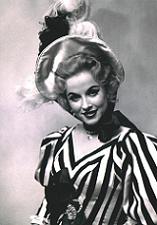 MC: As I told you, I sang The Bartered Bride at the Shrine Auditorium in Los Angeles. The producer, Carl Ebert, from Germany, who was living in London, was brought over to produce The Bartered Bride and he immediately took me to the Glyndebourne Opera Festival, just outside of London.
MC: As I told you, I sang The Bartered Bride at the Shrine Auditorium in Los Angeles. The producer, Carl Ebert, from Germany, who was living in London, was brought over to produce The Bartered Bride and he immediately took me to the Glyndebourne Opera Festival, just outside of London.
A producer there was going to do Leonard Bernstein’s Candide in London. He saw me in this Wolf-Ferrari production of The Secret of Suzanne and he asked me if I had seen Candide. As a matter of fact, I had tickets to the road company of Candide that was going across America when I got back. And he told me: “I wish you would meet Leonard Bernstein because I would like to have you here in Candide. I wish you could audition for Leonard Bernstein. Do you know him?” And I said: “No, I don’t.” He said: “You know, I’m going to call and I’m going to have them contact you because I think they should hear you.” Well, I had been away for three months from Los Angeles and from my husband who had been directing all the time, one picture after the other, and when I went back, there was a call from Leonard Bernstein’s manager saying he would like me to audition for him when I come to New York to do that. And I didn’t want to leave my husband because I had been away for so long and had just returned home. He said: “Would you sing for my friend Lucas Foss in Los Angeles?” – they were very close friends and he was also a great composer – “You’ll be given the music for Glitter and Be Gay, the big aria from Candide. Lukas Foss will call me and tell me. I will trust him.”
So, I learned that aria over night and went and sang it for Lukas Foss. He was just very pleased and he said: “Wait just a minute. I want to call Lennie on the phone.” He went in and I remember – there is no coincidence; I feel that people have a journey and that’s it – he called and Leonard Bernstein’s maid answered, saying that he had just gone out for auditions. But while he was hanging on the phone, Leonard Bernstein had forgot his car keys and he came back. He told him about me and agreed to sign me for the road company because they had nobody! You know, he could have gone to auditions that day and found somebody. But he came back for his car keys…
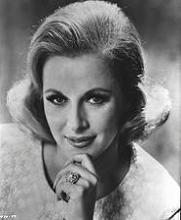 So, within 20 days, I was on my way to Pennsylvania to rehearsal and open in Leonard Bernstein’s Candide. He was there to prepare us for the road tour and then I got to know him well there. To work with him was like working with Walt Disney. He was so quick and he was so musical, funny, turbulent and overworking. He was there and he expected everybody to be there right on time, right when his baton went down. I just had a great, great relationship with him. That was 1958. And then, in 1970, he chose me again to do Candide in a full production that started in San Francisco and then went to Los Angeles and then ended up opening the Kennedy Center in the new Opera House in Washington DC. So, I got to work with him a lot and have a picture with him which is just fun. I have great memories of dinners after the rehearsals and the fun. He could relax and really get his mind off of music. But music would always come up. He was just music itself!
So, within 20 days, I was on my way to Pennsylvania to rehearsal and open in Leonard Bernstein’s Candide. He was there to prepare us for the road tour and then I got to know him well there. To work with him was like working with Walt Disney. He was so quick and he was so musical, funny, turbulent and overworking. He was there and he expected everybody to be there right on time, right when his baton went down. I just had a great, great relationship with him. That was 1958. And then, in 1970, he chose me again to do Candide in a full production that started in San Francisco and then went to Los Angeles and then ended up opening the Kennedy Center in the new Opera House in Washington DC. So, I got to work with him a lot and have a picture with him which is just fun. I have great memories of dinners after the rehearsals and the fun. He could relax and really get his mind off of music. But music would always come up. He was just music itself!
AV: You’re still very active in many ways, too!
MC: That’s the way my father was, and my mother, too. We’ve always had a really “up” attitude. We loved to laugh. I go around doing many, many different things. I speak to children, doing motivation speeches. And Disney helps me when I do something for Childhelp and abused children. We’ve raised a great deal of money to buy units that go out into the suburbs of Knoxville and help children who can’t afford to come in to doctors and everything. I love to do that. I have always loved children. They seem to have a certain affinity with me. I just enjoy their naturalness and their joy of living and their questions. It keeps me young, frankly. I love the fact that they like for me to read to them. I don’t just read Sleeping Beauty, I read lots of different books because I think it’s very important for parents to read to children. I hope we never loose that art of reading to the children because it just makes their minds take on so many different colors. They imagine in their own way what they want to feel and see and hear. It’s just amazing!
AV: What kind of personal connection do you have with Sleeping Beauty now?
MC: For me, Sleeping Beauty is like a beautiful glass time capsule where the joyest part of my youth has been kept preserved and eternally sealed. I’ve always felt that it was just a blessing. It was such an honor for me to do that. Actually, I was so conservatively raised in Tennessee before I went to California, and then I lived in a very conservative place, Glendale, in a very conservative High School. And when I went to do this movie for Disney, I had had a very wonderful childhood with my parents and my world just collapsed when I lost my father. But I took so many of the gifts that he gave me and the talks and the inspiration he gave me right into that film. So, that why I say that it seems like a time capsule. And I really feel that way because it makes me happy to know that people of all ages will enjoy this masterpiece. They will enjoy it for years to come and I hope that they will feel the love and integrity that were given to make this film, because everybody wanted this film to be perfect, because they knew that it was Walt’s dream to bring this Tchaikovsky to life. He loved the story.
I work now a lot for abused children and ten years ago, we showed the film here in Knoxville at the old Tennessee Theater which is a very beautiful old theater with a lot of gold and gorgeous stage and everything. I introduced the film and I went and sat in the audience and watched it with the children and the people who came, and I hadn’t seen it in a number of years, and I was so proud to have been a part of this film because I think it holds up like an arch-masterpiece. Because, if you took it apart, piece by piece, it would be an art piece. Because of those backgrounds by Eyvind Earle and the very smooth animation. I’m just very, very proud and I feel blessed that that was in my journey to be part of that film.

To Princess Mary, with love


